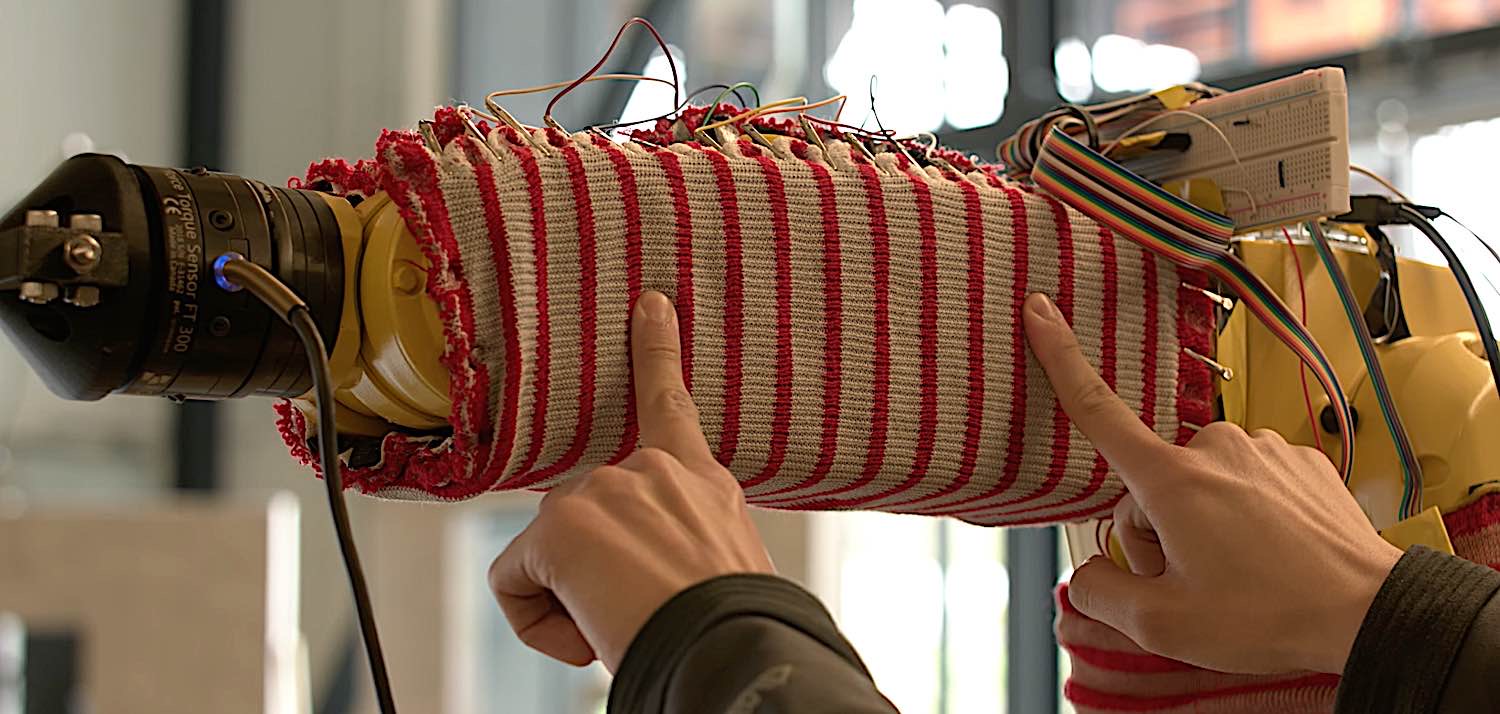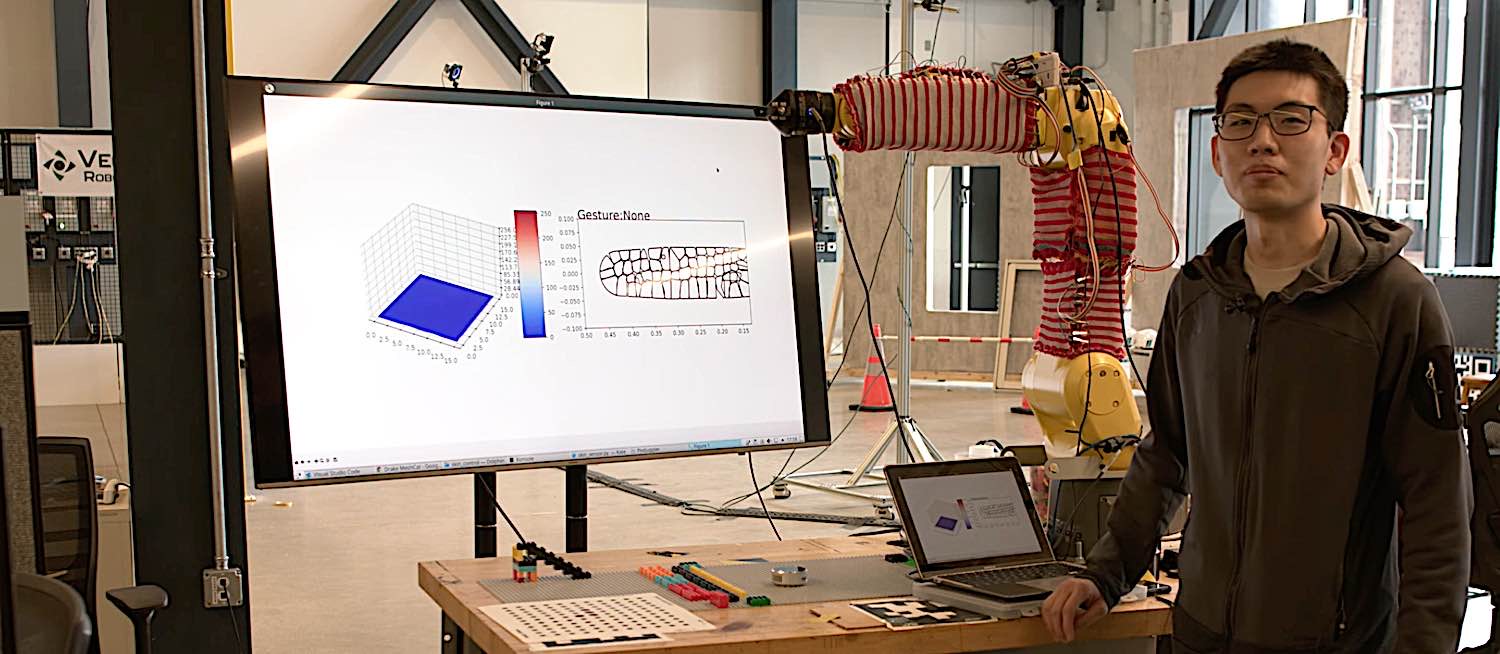In the grand symphony of technological advancements in the 21st century, robotics has taken center stage with its ceaseless evolution and relentless innovation. Robots, once confined to the role of industrial aids, have now found their way into our homes, assisting us in daily chores, surgical procedures, and even adventures beyond the boundaries of our planet.
This transformation didn’t happen overnight. It is the result of years of painstaking research and development, enabling robots to mimic human speech, emotions, and intricate movements. Artificial intelligence, coupled with advancements in mechanical design, has imbued robots with levels of functionality and adaptability that were once relegated to the realm of science fiction.
However, despite these remarkable strides, one quintessential human characteristic remained elusive to robotic capabilities – the sense of touch. Our tactile senses are pivotal to our interactions with our environment, playing an essential role in communication, empathy, and comprehension. Therefore, it is imperative to overcome this tactile hurdle to truly assimilate robots into our human-centric world.
Video from CMU Robotics Institute:
This is where a group of ingenious researchers from Carnegie Mellon University’s Robotics Institute have made an astounding breakthrough. They have developed the RobotSweater[1], an avant-garde innovation that has the potential to transform the tactile capacities of robots. This textile ‘skin’ can be attached to a robot’s body, much like a sweater worn by a human, extending beyond mere aesthetics to encompass sensory capabilities.
Far from being a run-of-the-mill piece of fabric, the RobotSweater is both robust and responsive. It is designed to sense contact and pressure, which heralds a paradigm shift towards more dynamic and authentic human-robot interactions. While robots of previous generations were largely indifferent to touch, those donning the RobotSweater are capable of responding to tactile interactions[2], effectively bridging the once seemingly insurmountable divide between humans and machines.

The Fabric of Innovation
Although the RobotSweater may appear like an ordinary piece of fabric at first glance, the story it weaves is much more intricate. The fabric’s genius resides in its composition – two layers of conductive yarn with an interspersed net-like, lace-patterned layer. The interaction between these layers is key to the fabric’s sensory capabilities.
When pressure is applied to the fabric, the conductive yarn in both layers comes into contact, closing an electrical circuit. This can be detected by sensors integrated within the RobotSweater, signaling that contact or pressure has been applied. This level of responsiveness was previously unheard of in the world of robotics, but the RobotSweater has brought it to life.
The meticulous design of the RobotSweater also facilitates its use in a wide range of applications. Its pliable nature allows it to adapt to the intricate three-dimensional surfaces of a robot’s body, regardless of its complexity. This flexible adaptation provides the robot with an unparalleled degree of tactile sensitivity, granting it an entirely new dimension of interaction with its human counterparts.

Tackling the Challenges: The Journey to Success
The journey to creating the RobotSweater was not a straightforward one. On this innovation expedition, the researchers faced many challenges, the most significant being the intricate integration of soft textiles with electronics and wiring systems. This task was complex and called for an innovative approach that would ensure both the robustness of connections and the integrity of the fabric itself.
The team ventured into the heart of this challenge, systematically exploring various techniques and methodologies. Numerous prototypes were created, tested, and dismissed, each one teaching the team valuable lessons and paving the way to an effective solution. Their final choice: snap fasteners at the end of each knitted fabric stripe to secure the wiring.
This novel approach guaranteed strong, durable connections, while simultaneously preserving the fabric’s sensory functionality and longevity. The snap fasteners offered a simple yet ingenious solution that sidestepped potential damage to the yarn, a critical feature for maintaining the RobotSweater’s ability to detect and respond to touch. Through their persistence and creativity, the team successfully surmounted this challenge, ensuring the effectiveness and longevity of the RobotSweater.
Implications for the Future
The successful creation of the RobotSweater does not mark the end of a journey but the beginning of an exciting new era in robotics. The implications of this innovation are far-reaching and transformative, promising a future where robotics and human life are intertwined more deeply and meaningfully.
In industrial settings, where robots and humans often work in close proximity, the RobotSweater could serve as a critical safety measure. The tactile ‘skin’ of the RobotSweater allows potential collisions to be detected, providing a crucial warning system that could help avoid accidents. In this way, the RobotSweater could drastically improve the safety of shared workspaces, making human-robot co-working environments safer and more efficient.
The RobotSweater also paves the way for a new, tactile form of communication between humans and robots. The fabric’s ability to sense pressure and direction allows robots to understand and react to human touch in a way that was previously unimaginable. For instance, a push on the fabric could instruct a robot on which direction to move, or how to orient itself. This simple, intuitive method of communication has the potential to enhance the efficiency and effectiveness of human-robot collaboration significantly.
Looking Ahead: Future Research and Developments
While the RobotSweater team is gearing up to share their groundbreaking research at the prestigious 2023 IEEE International Conference on Robotics and Automation (ICRA), their spirit of innovation continues to fuel their forward momentum. With their sights set on the horizon, the team is keen to capitalize on the present success of RobotSweater and explore untapped potentials.
One of the intriguing prospects lies in broadening the range of tactile interactions the RobotSweater can interpret. By programming the RobotSweater to respond to more intricate human interactions such as swipes, pinches, or even differentiating between a gentle pat and a firm push, the team is working towards an even more complex and profound system of human-robot communication. These further enhancements would allow robots to interpret a wider variety of human intentions, thus promoting more nuanced, sensitive, and meaningful interactions.
But the team isn’t stopping there. They also envision harnessing the tactile prowess of the RobotSweater to provide more sophisticated feedback to the robot’s internal system, potentially improving its balance, movement, or object handling capabilities. By doing so, they seek to blur the lines even further between mechanical and biological entities, pushing robotics into territories previously considered the exclusive realm of living beings.
Wrapping Robots in a Touch of Humanity
In a transformative leap for the world of robotics, the researchers at Carnegie Mellon University’s Robotics Institute have fashioned an invention that confers a touch of humanity upon robots. The RobotSweater, with its tactile sensing abilities, is not just an evolution in robot design but a revolution in human-robot interaction.
The significance of this invention cannot be overstated. It promises to enhance safety measures in environments where human-robot interaction is common, like industrial settings. By enabling robots to perceive and respond to touch, they can now detect and avoid potential collisions, thus significantly reducing workplace accidents.
Moreover, the RobotSweater is set to redefine the relationship between humans and robots. By providing a natural and intuitive line of communication through touch, it allows for more efficient collaboration and a shared understanding that was previously unattainable.
The journey to create the RobotSweater hasn’t been without its hurdles, but the team’s spirit of innovation and their perseverance in overcoming the challenges is a beacon for future researchers in the field. As they stride towards refining and expanding their invention, they set the stage for more breakthroughs that can further revolutionize human-robot interactions.
With the RobotSweater, the team paints a vivid picture of a future where our interactions with robots are not much different from our interactions with each other, truly endowing robots with a touch of humanity.
References and Sources:
1 – https://interestingengineering.com/innovation/unique-sweater-like-fabric-may-help-robots-feel-human-touch
2 – https://www.ri.cmu.edu/sweater-wrapped-robots-can-feel-and-react-to-human-touch/

































